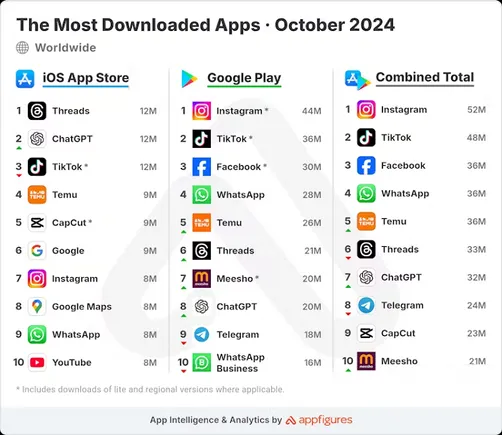As we enter 2024, influencer marketing continues to serve as an important digital marketing technique. Many companies, especially small businesses, leverage influencer marketing to get their brand and products in front of their target audience.
In this guide, we’ll discuss everything you need to know about influencer marketing for small businesses. We’ll start by covering the whats and whys of influencer marketing, and from there, we’ll dive into some tips and tricks small businesses can use.
What is influencer marketing?
Influencer marketing is a digital marketing technique that involves strategic partnerships between brands and content creators with engaged audiences.
This unique marketing technique puts a modern twist on product placement in the media or celebrity brand endorsements. Influencer marketing typically promotes brands in a way that feels more authentic than a professionally produced commercial.
Who benefits from influencer marketing?
Influencer marketing campaigns are mutually beneficial for both influencers and the brands that sponsor posts.
Brands that invest in influencer marketing gain direct access to an influencer’s audience. The influencer is paid a fee for their services and sometimes receives free products and services, as well.
Influencer marketing can also help buyers who are looking to discover new products. A HubSpot study reveals that 31% of social media users prefer discovering new products from influencers rather than the brand.
An endorsement from a buyer’s favorite influencer may help them feel more confident about a purchase they were previously on the fence about. In fact, 32% of Gen Z confirm that they’ve purchased something recommended by an influencer within the past three months.
10 tips for leveraging influencer marketing as a small business
Are you ready to partner with influencers to bring your brand to a larger audience? Here are some tips and tricks to tap into the power of influencer marketing as a small business.
1. Establish influencer marketing goals upfront
A major key to running a successful campaign with an influencer is to establish clear goals from the start. This step will help you better define your strategy and choose the best influencers for the job. It’ll also help track the success of your campaigns.
Start by determining how influencer marketing would contribute to your larger marketing goals. Consider what KPIs you are trying to hit and how investing in influencer marketing will push you toward those milestones.
Here are a few questions to help inspire your goal-setting journey:
- Do you want to directly increase product sales through influencer promotions?
- Do you want to enhance your brand’s online presence across various platforms?
- Are you looking to introduce your brand to new audiences or further solidify its presence among existing ones?
- Do you want to boost interactions like likes, comments, and shares on social media?
- Are you collaborating with influencers primarily to acquire user-generated content for your brand?
- Do you prefer to grow your social media followers or email subscribers?
- Are you introducing a new product and want to create buzz around its release?
2. Ensure audience compatibility
Audience compatibility should be a non-negotiable when choosing an influencer to work with. Working with a creator who shares your target audience is crucial for a successful campaign.
Take the health and wellness industry as an example. There are so many niches within that industry, so if you have a women’s yoga apparel company, it’s important to ensure that you’re working with an influencer whose following is the same demographic as your target audience.
On this note, don’t be swayed by follower counts. If a large influencer is available to promote your product, but their audience isn’t primarily made up of potential customers for your business, don’t be tempted by the idea of exposure.
This person’s endorsement likely won’t be as valuable as a smaller influencer in your industry. Why? Micro-influencers (under 15,000 followers) have the highest engagement rates across social platforms.
3. Make sure there’s brand synergy
When you hire an influencer, it’s crucial to ensure brand fit. Even if a potential influencer shares a target audience with you, it’s essential to take things a step further to consider whether your brands are aligned in a deeper way.
Think about your brand values. Does the influencer you’re considering share those values?
You can learn a lot by reviewing old posts from a creator. Look at other brands they’ve worked with, causes they’ve spoken about in the past, and how they’ve expressed themselves.
With this insight, you’ll better understand how compatible your brands are and how confident you’d be with this individual representing your brand.
4. Get smart with product placement
One way that influencer marketing goes wrong is when influencers promote a product in a way that feels inorganic. However, you can keep things on track by getting strategic about how products are placed.
Rather than staging a promotion with an influencer, consider asking them to incorporate your products into their day-to-day lives or a particular life event important to them.
Take, for instance, StudioSuits, a brand renowned for its impeccably tailored suits for men. They joined forces with Ola Onabulé, a renowned singer and copywriter, who graced the stage wearing one of StudioSuits’ masterpieces during a concert.
This partnership not only highlighted the suit’s aesthetic and fit but also subtly conveyed its appropriateness for significant occasions.
Such natural integrations feel less like hard-sell advertisements and more like genuine endorsements — which can have a much more profound impact on potential customers.
In short, always aim for authenticity over overt promotion.
5. Leverage influencer marketing analytics
In the realm of influencer marketing, where every dollar counts for small businesses, the ability to measure results with precision and understand your ROI is a big deal.
That’s where a marketing analytics software steps in as your behind-the-scenes ally.
Think of it as your own data wizard, offering you insights into the performance of each influencer campaign you undertake. Using a tool like that, you can track engagement metrics like likes, shares, and comments, giving you a real-time pulse on your audience’s response.
Moreover, it delves deeper into the conversion funnel, providing crucial data on website visits, click-through rates, and actual sales attributed to your influencer partnerships.
This level of granular measurement ensures that every dollar you invest in influencer marketing isn’t just spent but invested wisely, optimizing your strategy for maximum impact.
6. Experiment with live-selling
Live-selling is an e-commerce technique growing in popularity. If you’re unfamiliar with this approach, it simply involves selling products in a live stream. The best part? You can easily marry it with influencer marketing to create more interactive collaborations.
A partnership with an influencer typically comes with image and video content, but a live stream could provide even better results. This format allows companies to communicate directly with customers and interact with new audiences from different areas. You need a simple live stream production setup and are ready to go.
Additionally, when it is the familiar face of a well-known influencer who represents your company in a live broadcast, their followers will join in and have the opportunity to discover your brand. Influencers also can be honest and natural about their experiences with your products or services and answer questions about them in real-time.
Plus, you’re generating new content that you can store and repurpose in different ways down the road.
7. Work with local influencers
If you have a brick-and-mortar business, leveraging local influencers is an excellent way to go.
For instance, a small Fort Lauderdale florist looking to expand its reach in the local community can partner with a local lifestyle and home decor influencer like Haley Israelov.
By collaborating on content showcasing their floral arrangements’ beauty and artistry, this florist can leverage the influencer’s credibility to reach a wider audience.
It’s not just about promoting products. It’s about telling a story that resonates with the Fort Lauderdale community, drawing them into the world of this charming local flower shop.
8. Focus on trends in your niche
Consider the power of gaming influencers. According to Forbes, at least five of the top creators (read: influencers) create gaming content.
In other words, gaming has become a major cultural phenomenon, and businesses can ride this wave by aligning with the right game and influencer.
For instance, the Fortnite Spiderman outfit launch. This outfit became a sensation, not only because of its design but also because of how it was promoted.
Gamers, especially those who were fans of Spiderman, rushed to YUPLAY to get their hands on this exclusive virtual merchandise. Why? Popular gaming influencers were showcasing the outfit on their channels.
Partnering with such influencers can bring about similar effects for a small business. Even if you’re not directly related to gaming, showcasing your product or service in association with trending topics can increase its appeal.
9. Foster creative freedom
It’s essential to allow your influencers to promote your products or brand in a way that feels natural to their content creation style. You’re more likely to get high-quality content if influencers can express themselves without limitations.
Mikayla Shocks, for example, is known for her sponsored posts showcasing her family’s fun dynamic while mixing in products they love.
She brings a fun and creative flair to many brands, including Babybel Cheese. In this example, she records a silly game of Candy Land with her kids while eating yummy snacks in a recent collaboration with the brand.
It’s also a good idea to give creators freedom with the medium they use to promote your brand. Many influencers post exclusively on social media platforms, but others podcast, vlog, or blog. Give your influencers the freedom to use their tried-and-true methods to bring collaboration and promotion to life.
10. Develop long-term partnerships
Creating long-term partnerships with influencers is an excellent approach for brands that want their promotional efforts to be organic. With long-term influencer partnerships, followers will recognize the consistent endorsement of a product, building trust for your brand.
Plus, longer-term brand deals allow room for iteration and adjustment in future campaigns based on data from past campaigns with the same creator. This isn’t as easy with one-off influencer partners.
Final thoughts
When properly executed, influencer marketing can bring tremendous value to small businesses. By choosing the right influencers and creating goal-driven campaigns, you’ll be on track to turn followers into loyal customers and boost your sales.
Are you ready to level up your marketing campaigns? Dive into influencer marketing today. You won’t regret it. And neither will your bottom line.










